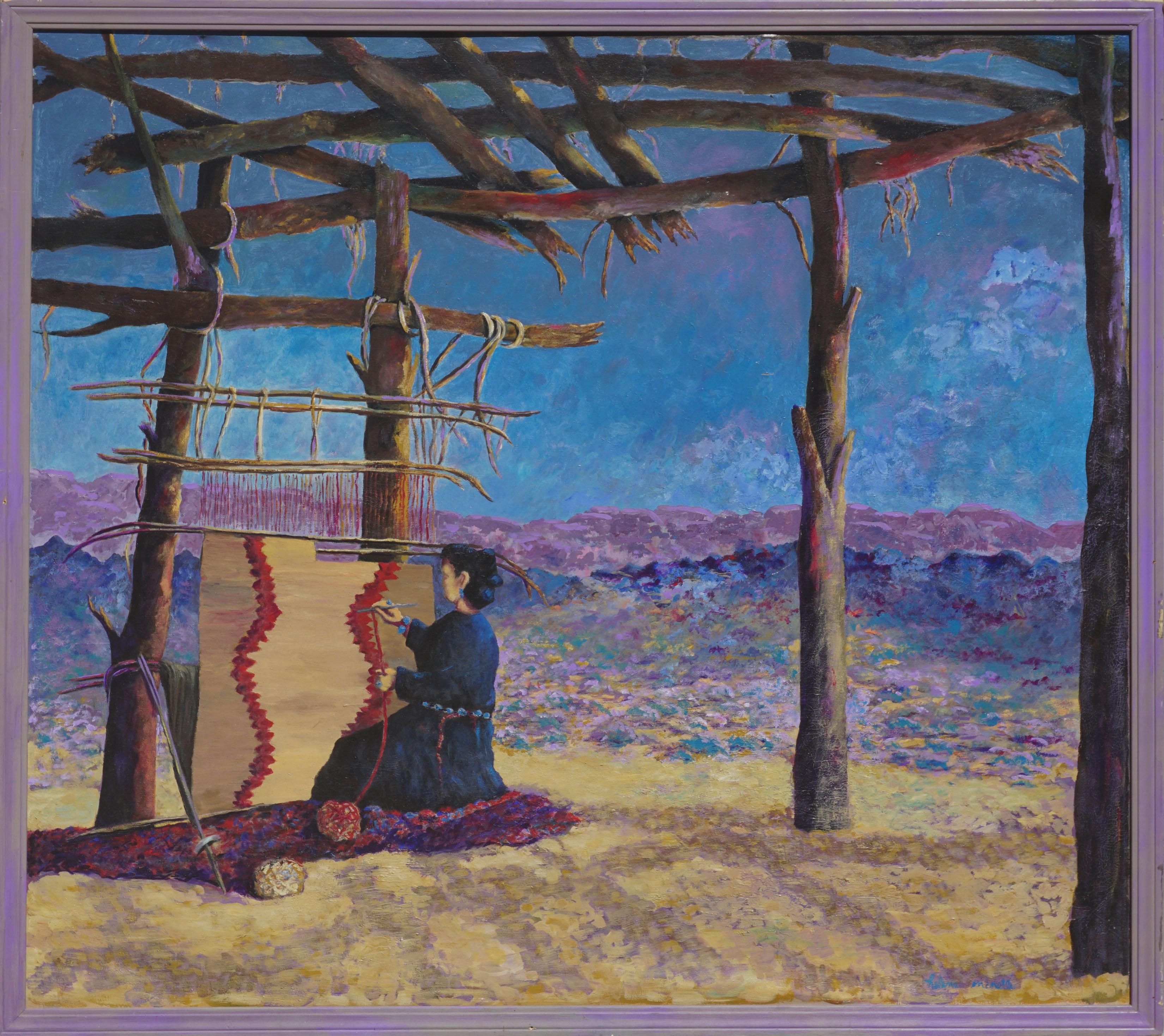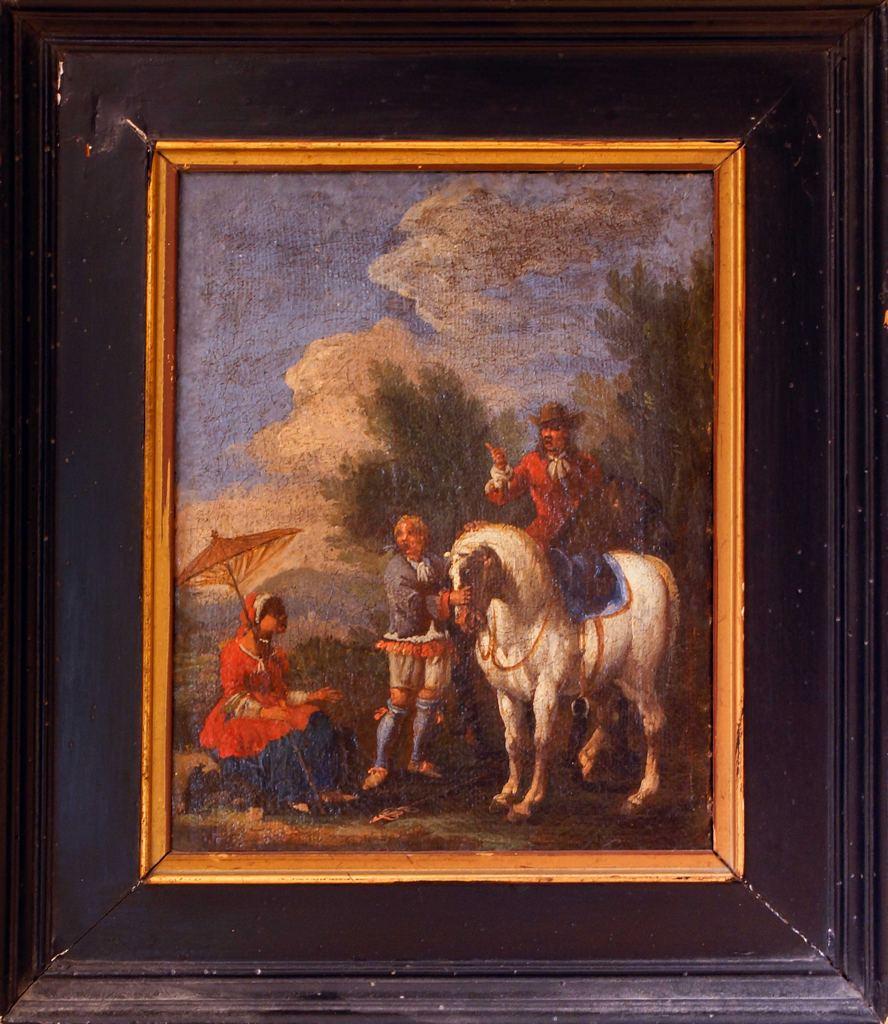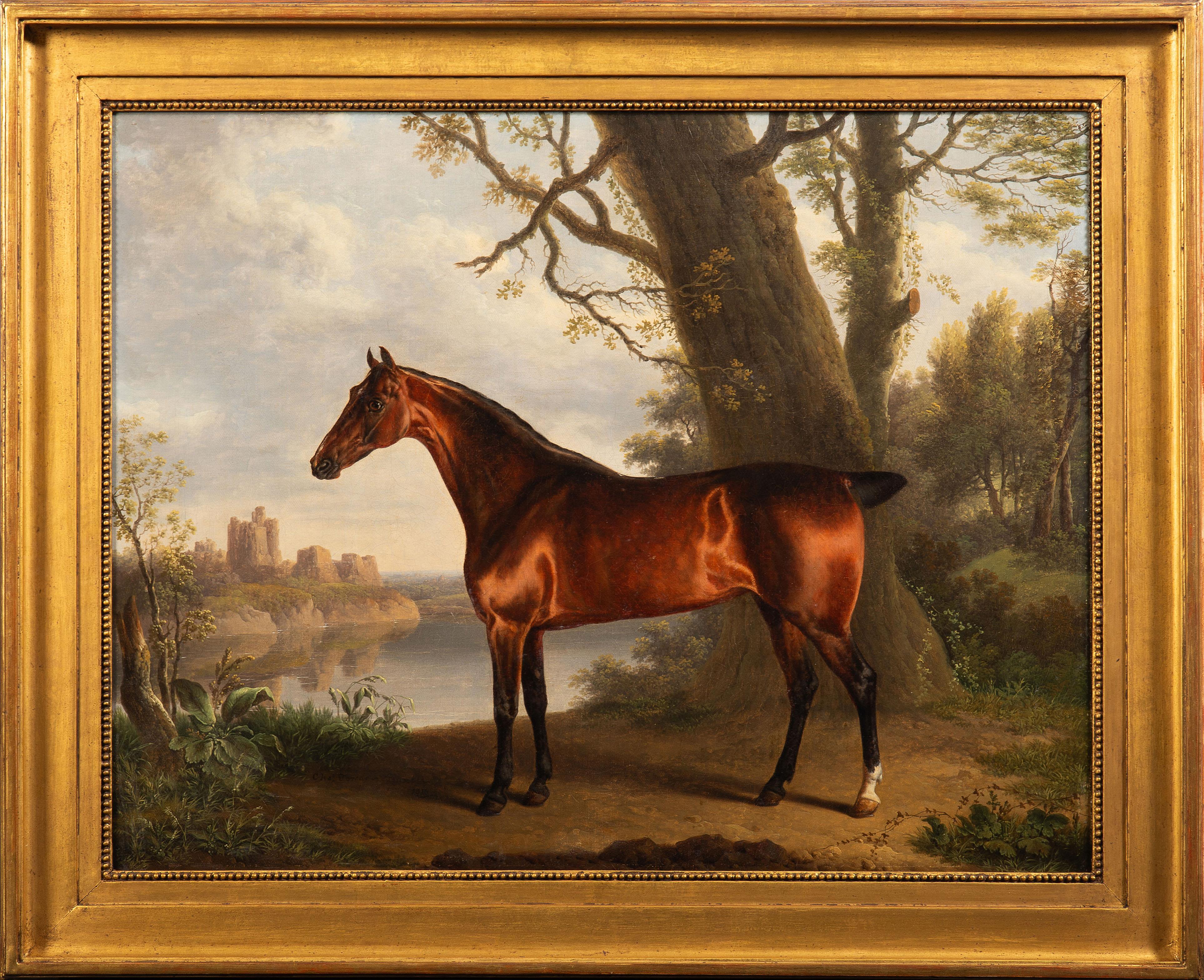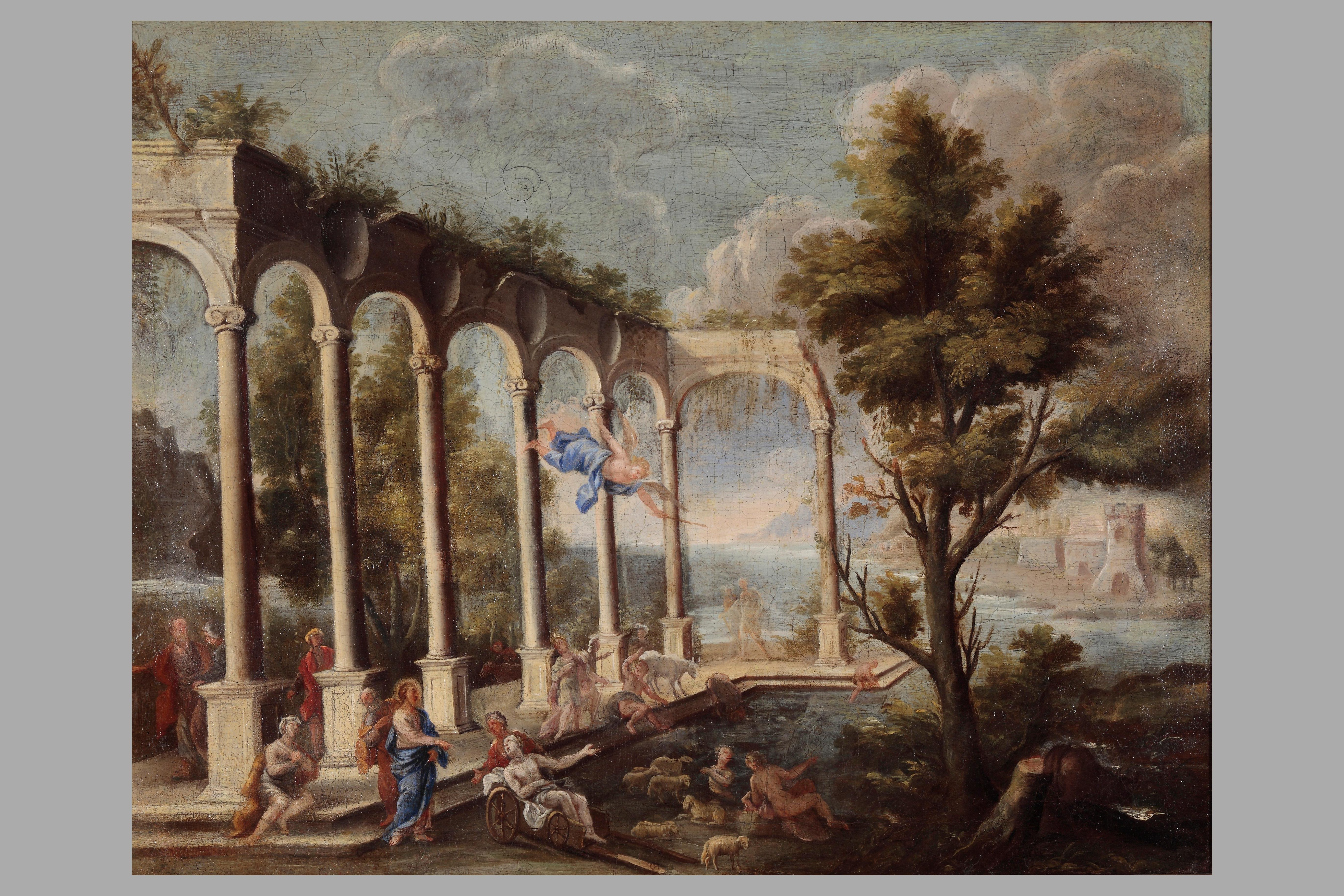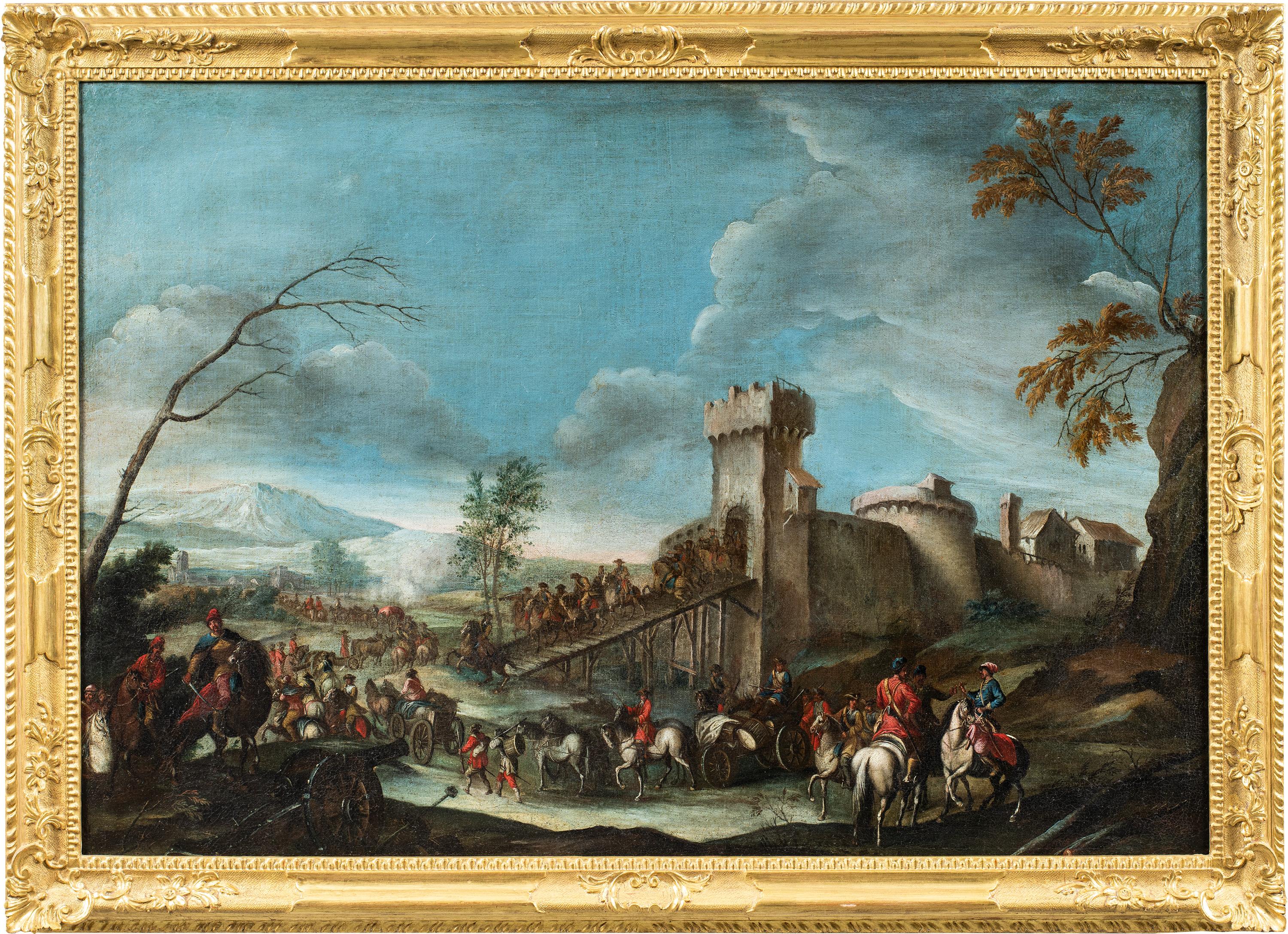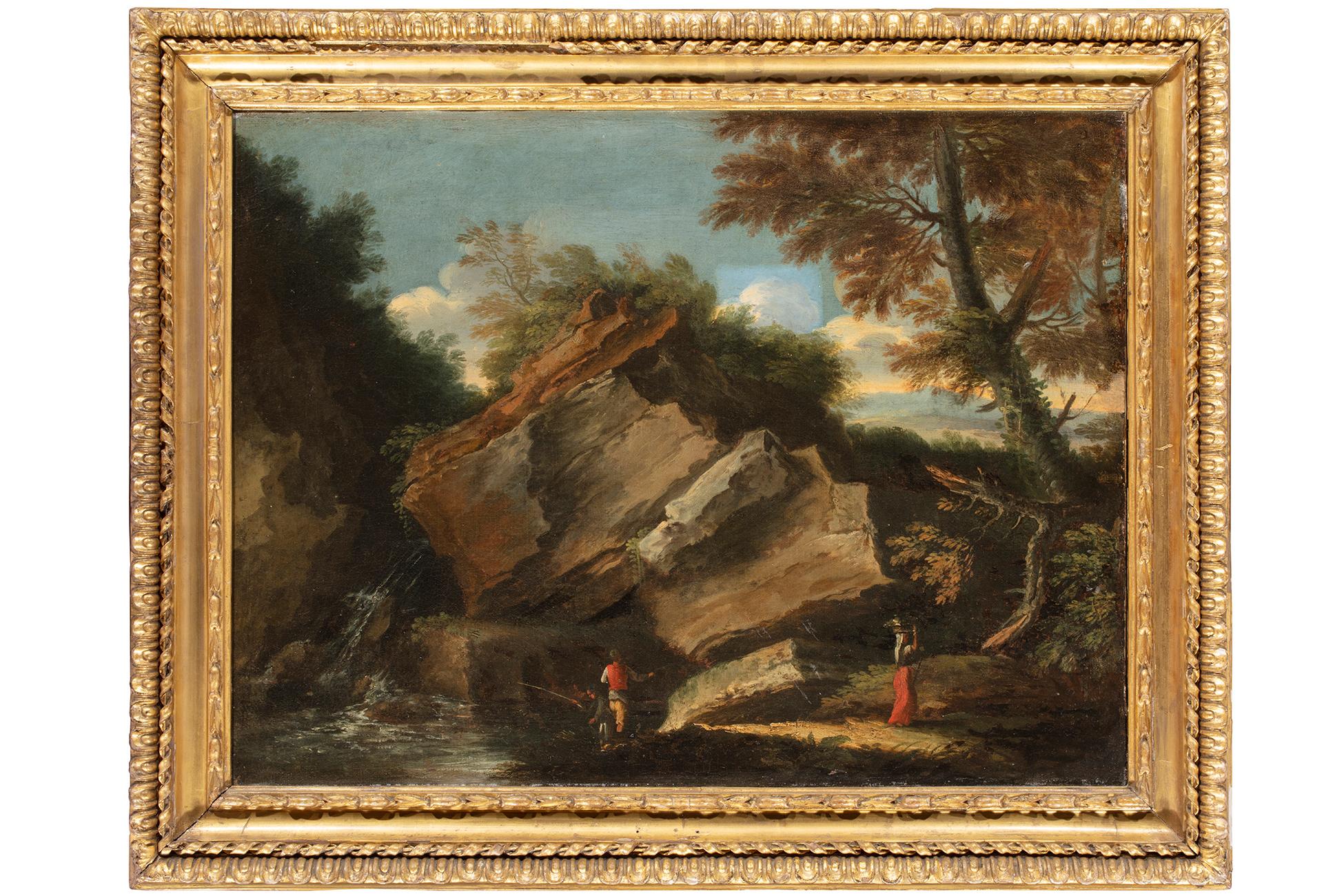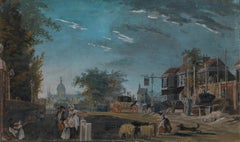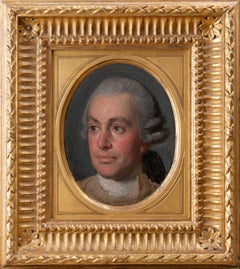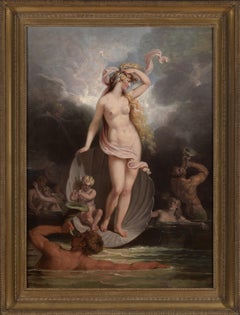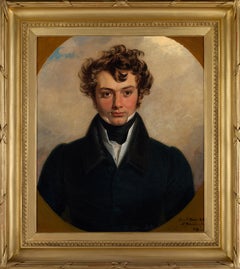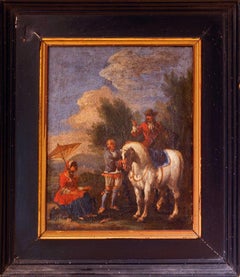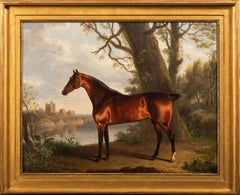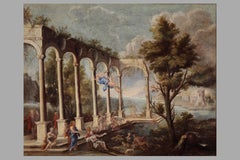Items Similar to Early oil depicting the Great Fire of London
Want more images or videos?
Request additional images or videos from the seller
1 of 7
Early oil depicting the Great Fire of LondonCirca 1690
Circa 1690
About the Item
The Great Fire of London in September 1666 was one of the greatest disasters in the city’s history. The City, with its wooden houses crowded together in narrow streets, was a natural fire risk, and predictions that London would burn down became a shocking reality. The fire began in a bakery in Pudding Lane, an area near the Thames teeming with warehouses and shops full of flammable materials, such as timber, oil, coal, pitch and turpentine. Inevitably the fire spread rapidly from this area into the City. Our painting depicts the impact of the fire on those who were caught in it and creates a very dramatic impression of what the fire was like. Closer inspection reveals a scene of chaos and panic with people running out of the gates. It shows Cripplegate in the north of the City, with St Giles without Cripplegate to its left, in flames (on the site of the present day Barbican). The painting probably represents the fire on the night of Tuesday 4 September, when four-fifths of the City was burning at once, including St Paul's Cathedral. Old St Paul’s can be seen to the right of the canvas, the medieval church with its thick stone walls, was considered a place of safety, but the building was covered in wooden scaffolding as it was in the midst of being restored by the then little known architect, Christopher Wren and caught fire. Our painting seems to depict a specific moment on the Tuesday night when the lead on St Paul’s caught fire and, as the diarist John Evelyn described: ‘the stones of Paul’s flew like grenades, the melting lead running down the streets in a stream and the very pavements glowing with the firey redness, so as no horse, nor man, was able to tread on them.’
Although the loss of life was minimal, some accounts record only sixteen perished, the magnitude of the property loss was shocking – some four hundred and thirty acres, about eighty per cent of the City proper was destroyed, including over thirteen thousand houses, eighty-nine churches, and fifty-two Guild Halls. Thousands were homeless and financially ruined. The Great Fire, and the subsequent fire of 1676, which destroyed over six hundred houses south of the Thames, changed the appearance of London forever. The one constructive outcome of the Great Fire was that the plague, which had devastated the population of London since 1665, diminished greatly, due to the mass death of the plague-carrying rats in the blaze.
The fire was widely reported in eyewitness accounts, newspapers, letters and diaries. Samuel Pepys recorded climbing the steeple of Barking Church from which he viewed the destroyed City: ‘the saddest sight of desolation that I ever saw.’ There was an official enquiry into the causes of the fire, petitions to the King and Lord Mayor to rebuild, new legislation and building Acts. Naturally, the fire became a dramatic and extremely popular subject for painters and engravers. A group of works relatively closely related to the present picture have been traditionally ascribed to Jan Griffier the elder, or being derived from Griffier’s work. This identification appears to be largely based on the existence an early nineteenth century lithograph after a painting (now unknown) of a similar subject which was at the time attributed to Griffier. Jan Griffier the elder (c.1652-1718) born in Amsterdam, who is recorded as being in London soon after the Great Fire of 1666. The present work appears to have been painted in the period 1690-1710 and it demonstrates the enduring appeal and interest in the subject matter. In its drama, multiple scenes of human interest and scale, this picture is one of the most remarkable depictions of the fire to appear on the market.
- Attributed to:Jan Griffier the Elder (1645 - 1718, Dutch)
- Creation Year:Circa 1690
- Dimensions:Height: 34.25 in (87 cm)Width: 49 in (124.46 cm)
- Medium:
- Movement & Style:
- Period:
- Condition:Preserved in good condition, house in an ebonised and giltwood frame.
- Gallery Location:London, GB
- Reference Number:1stDibs: LU150727721402
About the Seller
5.0
Recognized Seller
These prestigious sellers are industry leaders and represent the highest echelon for item quality and design.
1stDibs seller since 2021
- ShippingRetrieving quote...Shipping from: London, United Kingdom
- Return Policy
Authenticity Guarantee
In the unlikely event there’s an issue with an item’s authenticity, contact us within 1 year for a full refund. DetailsMoney-Back Guarantee
If your item is not as described, is damaged in transit, or does not arrive, contact us within 7 days for a full refund. Details24-Hour Cancellation
You have a 24-hour grace period in which to reconsider your purchase, with no questions asked.Vetted Professional Sellers
Our world-class sellers must adhere to strict standards for service and quality, maintaining the integrity of our listings.Price-Match Guarantee
If you find that a seller listed the same item for a lower price elsewhere, we’ll match it.Trusted Global Delivery
Our best-in-class carrier network provides specialized shipping options worldwide, including custom delivery.More From This Seller
View All18th century view of the Elephant and Castle in London
Located in London, GB
Collections:
With Martyn Gregory;
Judy Egerton, 1984, acquired from the above;
By descent to 2014.
Exhibited:
London, Martyn Gregory, Exhibition of English & Continental Watercolours, 1984, no. 94.
London, Lowell Libson...
Category
18th Century Old Masters Landscape Paintings
Materials
Gouache, Vellum
18th century portrait of the painter Nathaniel Dance
Located in London, GB
Collections:
Robert Gallon (1845-1925);
Private Collection, UK.
Oil on canvas laid down on panel
Framed dimensions: 11.5 x 10 inches
This highly engaging, previously unpublished portrait by Johan...
Category
18th Century Old Masters Portrait Paintings
Materials
Canvas, Oil, Wood Panel
18th century allegorical painting of The Triumph of Beauty
Located in London, GB
Exhibited:
London, Royal Academy, 1800, no. 93
What was happening in British history painting in around 1800? In recent discussions of the emergence of a British School of history painting following the foundation of the Royal Academy in 1768, this is a question which is rarely posed and one which is not easily answered. Examination of surviving Royal Academy exhibition catalogues reveals a profusion of artists’ names and titles, few of which remain immediately recognizable, whilst endeavours to explain the impact of exhibition culture on painting - such as the 2001 Courtauld show Art on the Line - have tended to focus on the first and second generation of Royal Academician, rather than young or aspiring artists in the early nineteenth century. This makes the discovery and identification of the work under discussion of exceptional importance in making sense of currents in English painting around 1800. Executed by Edward Dayes...
Category
18th Century Old Masters Figurative Paintings
Materials
Canvas, Oil
19th century portrait painted in St Petersburg in 1819
Located in London, GB
Signed, inscribed and dated, lower right:
'Geo Dawe RA St Petersburgh 1819', also signed
with initials, lower centre: 'G D RA'; and signed and inscribed verso:
'Geo Dawe RA Pinxit 1819 St Petersburgh';
Also inscribed on the stretcher by Cornelius Varley with varnishing instructions.
Collections:
Private collection, UK, 2010
Literature:
Galina Andreeva Geniuses of War, Weal and Beauty: George Dawe...
Category
19th Century Old Masters Portrait Paintings
Materials
Oil, Canvas
Portraits of the Hon. Mary Shuttleworth and Anna Maria, 9th Baroness Forrester
By Daniel Gardner
Located in London, GB
THE HON. MARY SHUTTLEWORTH, NÉE COCKBURN (D. 1777)
and her sister
ANNA MARIA, 9TH BARONESS FORRESTER (D. 1808)
Pastel and gouache on paper laid on canvas, on their original backb...
Category
18th Century Old Masters Portrait Drawings and Watercolors
Materials
Pastel, Gouache
19th century watercolour of a Girl at her Dressing Table
By William Henry Hunt
Located in London, GB
Collections:
Muir Hetherington;
Sir John and Lady Witt, acquired 1974;
By descent to 2015.
Literature:
Tom Jones (ed.), William Henry Hunt 1790-1864, exh. cat., 1981, no. 145 (Girl in a bedroom);
John Witt, William Henry Hunt (1790-1864) Life and Work, London, 1982, no. 553, p. 194, colour pl. 16.
Exhibited:
Wolverhampton, Central Art Gallery, Preston, Harris Museum and Art Gallery and Hastings, Hastings Museum and Art Gallery, William Henry Hunt 1790-1864, 1981, no. 145 as Girl in a bedroom (Lent by Sir John & Lady Witt)
Framed dimensions: 20 x 20.75 inches
This unusually charming and well-preserved watercolour was painted by William Henry Hunt in around 1833. Almost certainly depicting his young wife, Sarah, possibly in the interior of her family home at Bramley in Hampshire. This work shows Hunt’s remarkable virtuosity as a watercolourist, Hunt, for example, articulates the profile of his young wife, by leaving a reserve of white paper to suggest the light modelling her features. Throughout the 1830s Hunt made a sequence of richly painted interior views of both domestic and agricultural spaces which pay scrupulous attention to detail.
Hunt was born in London, the son of a tin-plate worker and japanner. J. L. Roget recorded the observation of Hunt’s uncle: ‘nervy, little Billy Hunt… was always a poor cripple, and as he was fit for nothing, they made an artist of him.’ At the age of sixteen he was apprenticed to the landscape painter John Varley for seven years, moving to live with Varley at 18 Broad Street, Golden Square, London. There he made close friends with both John Linnell and William Mulready. Hunt worked at the ‘Monro Academy’, at 8 Adelphi Terrace, London, the house of Dr Thomas Monro, an enthusiastic patron of landscape watercolourists. Through Monro, Hunt was introduced to the 5th Earl of Essex...
Category
19th Century Old Masters Figurative Drawings and Watercolors
Materials
Watercolor, Pencil
You May Also Like
"The Weaver" - Large Scale Navajo Figurative Landscape
Located in Soquel, CA
Stunning large scale and vivid painting of Native American weaver by Northern California artist Helene Minelli (American, 1918-2010), circa 1980s. Signe...
Category
1980s Old Masters Landscape Paintings
Materials
Canvas, Oil, Stretcher Bars
The Knight - painting - XVII century
Located in Roma, IT
The Knight is an original oil painting on canvas realized during the XVII century by an anonymous artist.
Provenance: Pecci-Blunt collection. Good condition...
Category
17th Century Old Masters Figurative Paintings
Materials
Canvas, Oil
A bay hunter in a landscape
By Charles Towne
Located in Stoke, Hampshire
Charles Towne (1763-1840)
A bay hunter in a landscape
signed and dated 'Charles Towne Pinxit 1816' lower left
Oil on canvas
Painting Size - 20 x 26
Framed Size - 25 x 31 in
Provena...
Category
Early 19th Century Old Masters Landscape Paintings
Materials
Canvas, Oil
18th Century By Vincenzo Re The Pool of Bethesda Oil on Canvas
Located in Milano, Lombardia
Vincenzo Re (Parma, Italy, 1695 - Naples, Italy, 1762)
Title: The Pool of Bethesda
Medium: Oil on canvas
Dimensions: without frame 50 x 62 cm - wi...
Category
18th Century Old Masters Landscape Paintings
Materials
Canvas, Oil
Christian Reder (Italian master) - 18th centurylandscape painting - Soldiers
By Christian Reder (Monsù Leandro)
Located in Varmo, IT
Christian Reder (Leipzig 1656 - Rome 1729) - The departure of the soldiers from the fort.
57.5 x 108.5 cm without frame, 89 x 122 cm with frame.
Antique oil painting on canvas, in ...
Category
Early 18th Century Old Masters Landscape Paintings
Materials
Canvas, Oil
17th Century by Pietro Montanini Landscape Oil on Canvas
Located in Milano, Lombardia
PIETRO MONTANINI (Perugia, Italy, 1619 - 1689)
Title: Landscape
Medium: Oil on canvas
Dimensions: without frame 50 x 65 cm - with frame 64 x 79 cm
An...
Category
17th Century Old Masters Landscape Paintings
Materials
Canvas, Cotton Canvas, Oil
